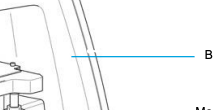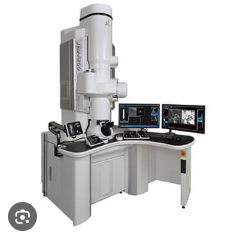BIOL101A- Lab 5 : Microscopes
1/27
There's no tags or description
Looks like no tags are added yet.
Name | Mastery | Learn | Test | Matching | Spaced |
|---|
No study sessions yet.
28 Terms
light microscope
a microscope that extends our vision around 1000 times os that objects as small as 0.1 micrometer ( 10^-7m) in diameter can be seen
electron microscope
a microscope that further extends the viewing capability down to 10A or 0.1nm (10^-9 m)
resolving power
the ability to distinguish detail
increased by reducing the wavelength of the light used

magnify
zooming into objects
numerical aperture (N.A.)
a value part of the lens system which is derived from a mathematical expression that relates the solid cone of light delivered to the specimen by the condenser lens and to the light gathered by the objective lens

contrast
the differential absorption of light by parts of the specimen
cytochemistry (histochemistry)
the study of staining
resolution
magnification
contrast
what a good microscope is dependent on
ocular lens
the lens system looking through
monocular
binocular

diopter adjustment ring
allows for independent focusing of that lens to compensate for differences between the eyes
body tube
the hollow housing of the microscope through which light travels from he objective to the ocular lens

nosepiece with objective lenses
3-4 lenses mounted on a rotating nosepiece or turret attached to the bottom of the body tube
4x - low power
10x - medium
40x - high dry
100x oil emersion

total magnification
product of the magnification of the ocular lens and the magnification of the objective lens
stage
horizontal platform which the microscope slide is placed

iris diaphragm lever
adjustable light barrier built into the condenser
adjusts amount of light being focused onto the specimen

substage condenser
the condenser lens system, located under the stage, focses light on the specimen

light source
light source on the microscope

base and body arm
structural elements of the microscope

coarse focus adjustment knob
movement allows large movement of the stage toward the objective lenses
only for 4x or 10x
bottom line

fine focus adjustment knob
changes the specimen to objective distance very slightly with each turn of the knob
only high dry and high oil
40x 100x
top arrow

parfocal
if the specimen is in focus at one magnification, the specimen will be close tot eh focal plane when a different objective lens is rotated into place
depth of focus
only part of a thick specimen is in focus at any one setting
high the magnification the thinner the depth of focus
ocular ruler
in the ocular lens that is a small glass disc on which is superimposed on the image of the specimen to be measured
stage micrometer
how the ocular ruler is calibrated
a standard ruler
refraction
the bending of light as it passes from one medium to another
stereoscopic microscope
aka dissecting microscope
contains 2 objective lenses for each magnification
2 ocular lens
magnifications → 4x to 50x
Transmission Electron Microscope (TEM)
a vertical television tube with an electron gun at the top and the fluorescent screen at the bottom

specimen processing
an important step prior to the placement of the specimen in a TEM, which fixes the tissue to preserve structure